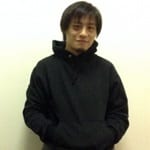When you’re learning Japanese, you will be introduced to Japanese particles. Similar to prepositions in English, these words help to determine the role of other words within a sentence. Sound confusing? Don’t worry. Here, Brighton, MA Japanese teacher Karou N. breaks down how to use Japanese particles…
Particles, functional parts of speech which indicate grammatical relationships between words, are important in any language. In the Japanese language, particles are categorized by function and placement.
The most important Japanese particle and the one you should learn first, is the “case-marking particle.” The case-marking particle is organized into three groups.
Here are three ways you can use Japanese particles.
1) 「が」/ga, the nominative (subjective) case
The case-marking particle indicates the relationship between words and phrases. When you combine a particle with another word, the particle determines the word’s role in the sentence.
The basic Japanese particles are the nominative (subjective) case, the objective case, and the possessive case. Just like in English, nominative refers to the person or thing that is doing an action, the objective case refers to the the person or thing that an action is being done to (or on the behalf of), and the possessive case indicates ownership of one noun by another.
In Japanese, the particle「が」/ga is one of the most common particles used to identify a subjective phrase.
Here is an example:
- わたし-が-する。= Watashi – ga -suru (I do)
Watashi means “I” and suru is “do.” Ga is the particle that follows watashi. In Japanese, the particle comes after the word that the particle supports. So it’s called a post-position, as opposed to a preposition that precedes a word in English.
There is no English translation for ga.
Ga defines the role of watashi in the sentence. In this case, watashi is the subject.
If you use a different particle in place of ga, it will change the meaning of the entire sentence. For example, if you say “watashi– to- suru,” it means “do (it) with me.” The particle to doesn’t give a subjective role to the word watashi.
Finally, 「の」/ no is another particle that can give a word a subject role. Be careful, though; no can have different meanings, as you will see later in this article.
2) 「を」/wo, the objective case
Just as ga is the typical subject marker,「を」/wo is the typical object marker.
Here are some examples:
Notice the word watashi doesn’t change, and it’s still placed at the beginning of the sentence. In this case, however, it’s followed by 「を」, the post-positional particle that makes it an object.
- 本-を-読む。= hon(book)-wo-yomu(read) = Read a book
In this sentence, the verb is yomu (to read) and the object is hon (a book). The word order is inverted, and the particle follows the object.
This can be confusing for English speakers, because you don’t usually place prepositions before objects in English.
3) 「の」/no, the possessive case
In this case, no is used to express possession. Using no in Japanese is almost like using an apostrophe “s” in English.
- 先生-の-本 = sensei (teacher) – no(‘s) – book = teacher’s book
- 彼-の-服 = kare (he) – no – huku (cloth) = his cloth
- わたし-の-ペン = watashi (I) – no – pen = my pen
No isn’t solely used as a possessive marker. For the most part, however, if you write a sentence in Japanese that would have an apostrophe “s” in English, you will probably use no in the possessive case.
Learning how to use Japanese particles can give you a solid foundation to help you read and write in Japanese. If you need additional help with particles, make sure to ask your Japanese teacher to go over them in your lessons.
 Post Author: Kaoru N.
Post Author: Kaoru N.Kaoru N. teaches Japanese, guitar, and classical guitar lessons in Brighton, MA. Originally from Tokyo, he graduated from Berklee College of Music with a dual major, and is available for in-home, in-studio, and online lessons. Learn more about Kaoru here!
Maile Proctor


